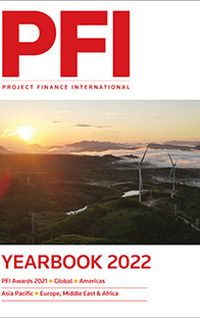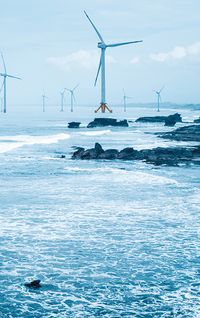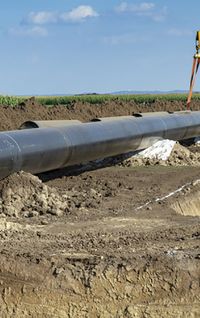Sempra has restructured some of its subsidiaries this year to create Sempra Infrastructure. The new entity will look to the project finance community to back its ambitious plans. By Nic Stone.
Many modern business success stories seem to rely heavily on being part of the right story. If you are part of that, then the money and investment will come – whether you are selling trips to outer space or a cryptocurrency named after a Japanese dog.
To be sure, the energy and infrastructure markets are perhaps more staid that rockets and tokens. But finding the right story seems more important than ever, especially when thought of in the context of decarbonisation and the shift to a greener future, considerations about ESG among investors, and the very real task of combating a climate catastrophe. Companies want to show they are at the vanguard of that fight and opportunity and they want to carve out a place for themselves in the story.
San Diego-based energy and infrastructure company Sempra is one of the companies that is very clear on the story it is part of – the energy transition. In early 2019, the company set off a series of transactions that lead us to where it is now – the creation of Sempra Infrastructure, a company focused on LNG and renewables and hoping to position itself at the centre of the decarbonisation of the grid and the evolution of power markets.
News first circulated in early 2019 that Sempra was looking to exit its Latin American businesses to focus on North American markets. Sempra’s sale of its Peruvian business for US$3.59bn to Chinese company China Yangtze Power International went through in April 2020, before the sale of its Chilean business to State Grid International Development (SGID) for US$2.23bn was completed in July of the same year. Bank of America Merrill Lynch and Lazard were financial advisers to Sempra on the sales, and White & Case was legal adviser.
“Today’s announcement completes the divestiture of all of Sempra Energy’s South American assets – an important step in narrowing our strategic focus to the most attractive markets in North America,” said Jeffrey W Martin, chairman and CEO of Sempra, at the time. The war chest raised from the sales was booked to be used to further strengthen the company’s balance sheet and liquidity position, but also to allow it to focus on certain projects and markets and insert the company in one of the major stories of our time.
“There was more growth in those assets to come, but we definitely felt that we wanted to recycle the capital out of Latin America and into the US where we were seeing more growth,” Sempra Infrastructure’s new chief financial officer (CFO) Faisel Khan told PFI, citing the company’s expectation that there will be 8%–10% growth in its California and Texas asset base over the next five years.
“We sell LNG and renewable power and those are the two parts of the energy value chain where we are seeing GDP-plus growth rates,” Khan said. “Those are the two parts of the energy value chain that are part of the energy transition. Our view is that if you just took all the energy that was used in coal and oil and substituted it with renewables and natural gas, then you can reduce overall emissions by over 50%. This whole concept for using natural gas to back up renewables.”
Sempra began a series of transactions in December 2020 that were intended to simplify the company’s non-utility infrastructure investments under one self-funding platform, Sempra Infrastructure, combining Sempra LNG, a leading developer of liquefied natural gas (LNG) export infrastructure, and IEnova, one of the largest private energy companies in Mexico.
In April, Sempra then announced that it has entered into a definitive agreement to sell a non-controlling, 20% interest in Sempra Infrastructure to KKR for US$3.37bn in cash, subject to adjustments, in a deal that closed in October.
In early June, Sempra’s exchange offer to acquire the outstanding shares of IEnova as part of the business reorganisation expired, meaning it owned more than 95% of IEnova’s shares and was nearing the ability to complete the reworking. It then hit 99.9% later in the year, allowing the deal to be done.
“To an extent our Mexico growth plans relied on LNG, so it was a natural fit putting the two together to focus on the LNG business. The newly formed business is really a function of us finding this shared platform to grow the LNG business and giving our customers access to LNG on the Pacific and Atlantic,” said Khan.
Assembling the team
Sempra Infrastructure wasted no time in naming its leadership team and even brought some big names into the fold when making the announcement in November 2021. Justin Bird, formerly chief executive officer (CEO) for Sempra LNG and a key figure in the company’s project finance activity over the past decade, particularly in the LNG export facility space, was named chief executive officer of Sempra Infrastructure.
Dan Brouillette, former US Secretary of Energy, joined the executive team as president of Sempra Infrastructure and was perhaps the splashiest hire. Tania Ortiz Mena, formerly CEO of IEnova, was named group president for clean power and energy networks. Reporting to Ortiz Mena will be Carlos Barajas, senior vice-president and chief business officer for clean power, and Carlos Mauer, senior vice-president and chief business officer for energy networks.
Lisa Glatch, formerly president and chief operating officer (COO) of Sempra LNG, was named president, LNG and net-zero solutions, where she will lead the company’s business activities related to LNG infrastructure, hydrogen, carbon sequestration, and next-generation energy technologies. Also reporting to Bird will be Carolyn Benton Aiman, senior vice-president and chief legal officer; Randall Clark, senior vice-president and chief human resources officer; and Faisel Khan, senior vice-president and CFO. Each previously held similar roles at Sempra LNG.
Sempra Infrastructure investments include more than 1,500MW of clean power, more than 4,500 miles of natural gas transportation and distribution pipelines, and 12m tonnes per annum of natural gas liquefaction in operations across North America.
“Sempra Infrastructure is well positioned to continue the development of large-scale energy infrastructure, and we plan to build on that momentum as we innovate and explore opportunities in new technologies while supporting the energy needs of our customers in the US, Mexico and around the world,” said Bird.
Ambitious growth needs PF
Of course, Sempra is no stranger to project finance and the company expects to require a lot of it moving forward.
“Our strategy is to look for the most competitive cost of capital. If that means third-party financing, PF bonds, PF debt, guaranteed debt, or to rely on our existing credit commitments and bond markets in Mexico and US, we can try to optimise all of that,” Khan said.
In one of its larger recent deals, Sempra through IEnova closed a US$1.58bn five-year loan using a syndicate of banks. Lenders included Bank of Nova Scotia, SMBC, BBVA, and Citi/Banamex for the deal backing the Energia Costa Azul (ECA) natural gas liquefaction project in Baja California. The scheme requires about US$2bn, meaning around 75% leverage.
The ownership structure sees Sempra LNG hold 41.7%, IEnova hold 41.7%, and Total owning 16.6% of the project’s equity. The group tapped TechnipFMC as the engineering, procurement and construction (EPC) contractor.
Sempra Infrastructure is developing additional LNG export facilities on the Gulf Coast and Pacific Coast of North America, including Cameron LNG Phase 2 and ECA LNG Phase 2. The successful development and ultimate construction of these projects as well as Sempra’s other LNG export projects are subject to a number of risks and uncertainties and there can be no assurance that these projects will be completed, the company said.
Given its brownfield nature and its West Coast location, the ECA LNG project is geographically positioned to provide Asia and other Pacific Basin markets with access to a reliable source of North American natural gas directly from the Pacific coast.
“We get a lot of inbounds from investors that see what we are doing in Mexico and want to invest with us,” Khan said. “We will continue with our existing partnerships or look to expand them.”
Sempra has always been a darling of project financiers, with New York bankers knowing all too well the long flights to San Diego to court the company. It means it has options. “We are not going to commit to one type of financing. We want to maintain financial flexibility to grow our business,” it said.
Despite the heavy focus on LNG, the company will continue to build its renewables business. Prior to the combination, IEnova paid US$80m to buy out its development partner and take full control of the 155MW Energia Sierra Juarez wind complex in Baja California. The company owned 50% of the equity and bought out Actis affiliate Saavi Energia’s 50% stake in the wind farms.
The company is looking to establish a power hub in that geographic area and remains one of the only companies capable of transmitting power from its projects in Mexico into the US market.
New technologies are also being incorporated in the company’s growth plans. It will develop a 100MW solar plus storage project in Mexicali, it recently announced. The Volta de Mexicali (VMD) project is part of a cooperation agreement with the International Finance Corporation (IFC), a member of the World Bank Group, which is there to support the company in the early development and to contribute to establishing the company’s sustainability-linked finance framework, according to a press release.
The project will be delivered in phases, with the first 100MW expandable to a potential 500MW. The final investment decision for the first phase could be reached as early as the first half of 2022, while commercial operation could start in mid-2023.
“We will definitely see if project finance is the best way to harness the cost of capital for those types of assets,” Khan said, despite some concerns. “Sometimes in the project finance market, especially with wind and solar projects, when you start to have a lot of covenants where cash gets trapped in those entities, then that can be a bit of a bottleneck for us,” he said.
Sempra Infrastructure has ambitious plans for the next decade, but it wants to help tell the story of the energy transition from a new-found position of stability and collaboration.
“We believe Sempra Infrastructure Partners is well positioned to be a leader in the global energy transition,” said Jeffrey W Martin, chairman and CEO of Sempra Energy. “By focusing on the critical need for new energy infrastructure right here in North America, both Sempra LNG and IEnova have created a significant pipeline of development projects that are expected to provide differentiated growth for decades to come."
It is still early, but Sempra Infrastructure is definitely setting out to take its place at the heart of the energy transition.
To see the digital version of this report, please click here
To purchase printed copies or a PDF of this report, please email gloria.balbastro@lseg.com

















